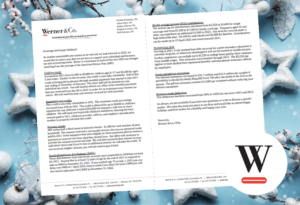 Here are the highlights you need to know about tax changes resulting from the American Rescue Plan (ARP).
Here are the highlights you need to know about tax changes resulting from the American Rescue Plan (ARP).
……………………………………………………………………
Greetings and happy holidays!
As another memorable year comes to an end and we look forward to 2022, we would like to assure you that we are here to support your individual and business tax and accounting needs. Below is a summary of some of the new 2021 tax changes resulting from the passage of the American Rescue Plan (ARP).
Child tax credit
Increased in 2021 from $2,000 to $3,000 for children ages 6-17 and $3,600 for ages 5 and under. Further to the increase, this credit is now fully refundable. Half of this credit is being paid in advance through monthly payments that started in July 2021 and ending in December of this year. The other half will be claimed on your individual tax return. You will need to inform our office of the monthly payments that you received from the IRS in 2021 in order for us to prepare your income tax return. We will need the date and amount received for each payment.
Dependent care credit
This credit is also fully refundable in 2021. The maximum credit percentage increased from 35% to 50%. The credit is allowed for up to $8,000 in childcare expenses for one child and a total of $16,000 for taxpayers with two or more children. We will need you to provide childcare statements showing the total amount paid in 2021, childcare provider, address, and employer identification number to properly calculate the credit.
Stimulus checks
ARP authorized a third round of stimulus checks – $1,400 for each member of your household. The amount received is not taxable income, this was an advanced credit paid in 2021. Some taxpayers that were eligible for these payments did not receive a payment or received less than what they should have. Our office will need you to provide the amount received and date. We will then reconcile that amount on your individual return and if you’re due an additional amount we will take the credit. If you received a higher amount, you will not need to pay it back.
Required minimum distributions (RMDs)
These distributions from retirement accounts were suspended in 2020 but are back for 2021. Anyone that is at least 72 years of age by the end of 2021 is required to take an RMD by December 31, 2021. If you reached age 72 on July 1, 2021 you can delay your RMD to 1 April 2022, keep in mind if you delay this year’s RMD you will also need to take your 2022 RMD by December 31, 2022.
Health savings account (HSA) contributions
The annual cap on contributions increased from $3,550 to $3,600 for single coverage and from $7,100 to $7,200 for family coverage. Taxpayers aged 55 and older can contribute an additional $1,000 in 2021. You must be covered under a high deductible plan – $1,400 for individuals and $2,800 for families. Contributions can be made up to 15 April 2022 and count towards 2021.
Student loan debt
Starting in 2021, if any student loan debt incurred for a post-secondary education is canceled, forgiven, or otherwise discharged it will not be treated as taxable income. Further, employees can exclude up to $5,250 of college loans paid by their employer from taxable wages. This exclusion was extended through 2025. The $5,250 cap applies to both student loan repayment benefits and educational assistance offered by employers.
Estate and gift tax exemption
The lifetime exemption increased to $11.7 million and $23.4 million for couples if portability is elected by timely filing IRS Form 706 after the death of the first to die spouse. The gift tax exclusion remains $15,000 per recipient without reducing your lifetime exemption.
Business meals deduction
This deduction has been increased from 50% to 100% for tax years 2021 and 2022.
……………………………………………………………………
As always, we are available if you have any questions or wish to discuss a specific matter. We value the trust you place in our firm and would like to extend happy holidays and best wishes for a healthy and happy new year!
Sincerely,
Werner & Co. CPAs

 Reopening the U.S. is bringing more important changes as we approach post-pandemic normal. This includes an expansion of the Child Tax Credit (CTC).
Reopening the U.S. is bringing more important changes as we approach post-pandemic normal. This includes an expansion of the Child Tax Credit (CTC). Dear clients and friends:
Dear clients and friends: To our clients and friends:
To our clients and friends: